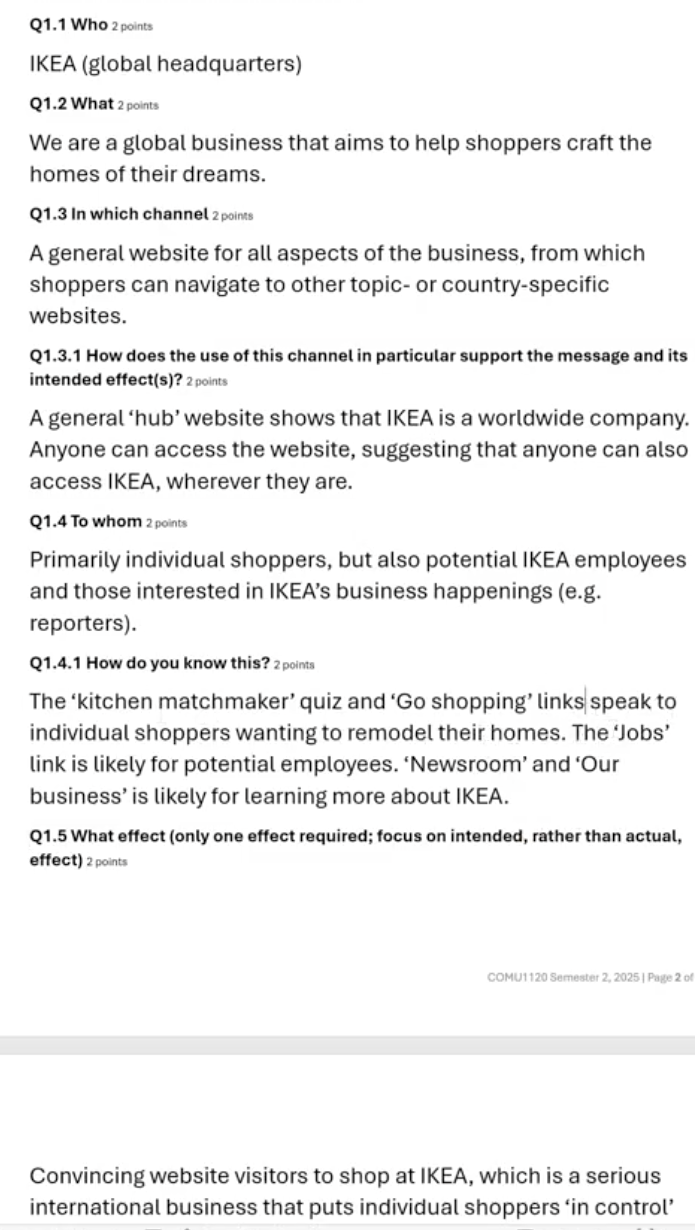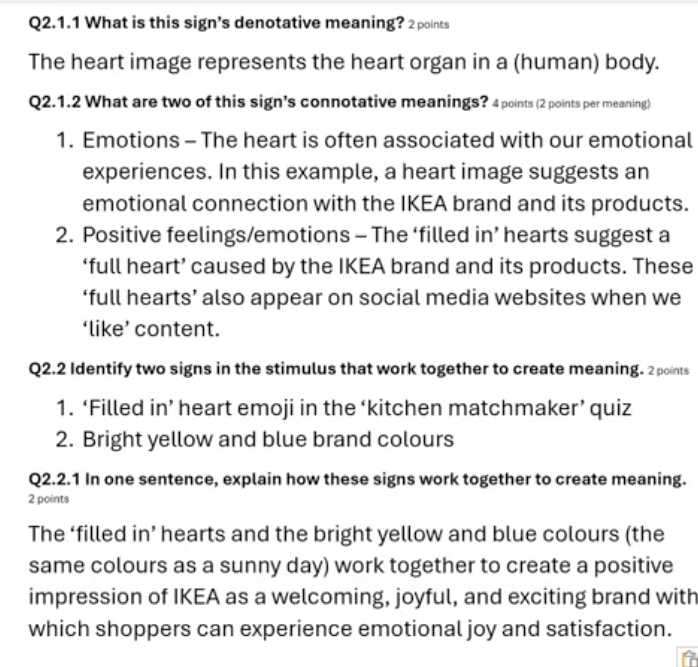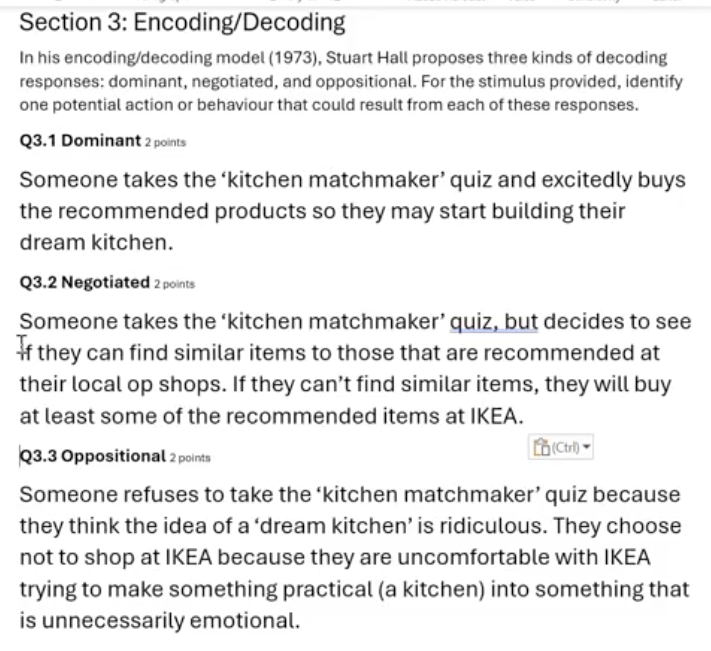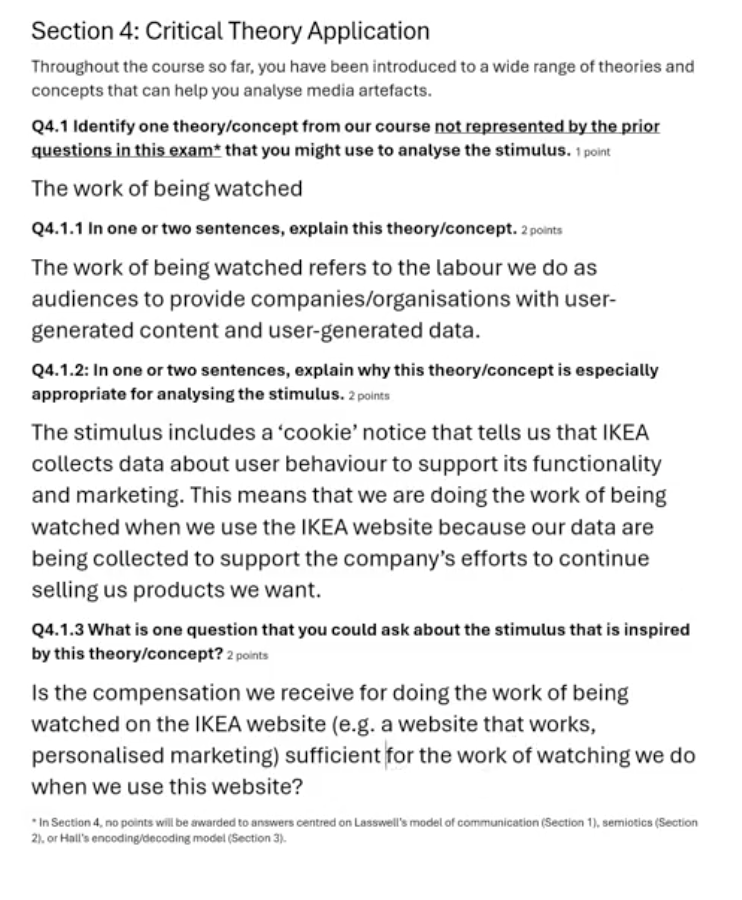exam content
Communication-as-Process Models
1. Harold Laswell (1948)
Core formula: Who says What in Which Channel to Whom with What Effect.
3 elements: Communicator → Medium/Message → Receiver.
Example: Australian Social-Media Age-Restriction Notice
Component | Instance |
|---|---|
Who | Australian Govt / eSafety Commissioner |
What | Under-16s barred from social-media accounts |
Channel | Official government website (text-heavy page) |
Whom | Parents, minors, platforms, int’l public |
Effect | Awareness, compliance, behavioural change |
Quick refresher: foundational models and framing
Harold Laswell’s communication model (the exam basis):
Communicator/Source, medium, receiver, and outcome.
Core question: \text{Who says what, in which channel, to whom, with what effect?}
This model helps us think about power/agency in communication and how messages travel through channels to influence audiences.
Semiotics – The Study of Signs
Sign = Signifier (form) + Signified (concept).
Two principal layers of meaning:
Denotation: literal/explicit.
Connotation: associated/implicit, culturally loaded.
Intertextuality: one text references/echoes another, adding layered meaning & signalling in-group knowledge.
Meaning only emerges within cultural context.
Illustrative Example – STOP Sign
Layer | Details |
|---|---|
Signifier | Octagonal red sign with white border & “STOP”. |
Signified | Instruction to halt movement. |
Denotation | English word “STOP” → cease driving. |
Connotations | Bright red (danger), uppercase bold (urgency), octagon (non-standard road shape signalling priority), placement at intersections → authority & legal compliance. |
Semiotic Analysis – Govt Age-Restriction Webpage
Denotation: New law will bar <16<16<16-year-olds from social-media accounts by Dec 2025.
Connotative signs:
Black text on white → official, serious, bureaucratic.
Pinks/reds in banner (“report abuse”) → mild danger signal, reinforces protective framing.
Logos (Commonwealth Coat of Arms, eSafety) → legitimacy.
Intertextuality & Counter-Texts:
Get-Ready-With-Me TikTok videos: informal bedroom setting, skin-care routine, teen slang; connotes intimacy, relatability, authenticity; challenges govt framing.
Memes (e.g.
BoJack Horseman trench-coat kids, Mr Krabs) – require pop-culture familiarity; create in-group humour while critiquing policy.
Semiotic outcome: competing narratives shape public perception & potential compliance.
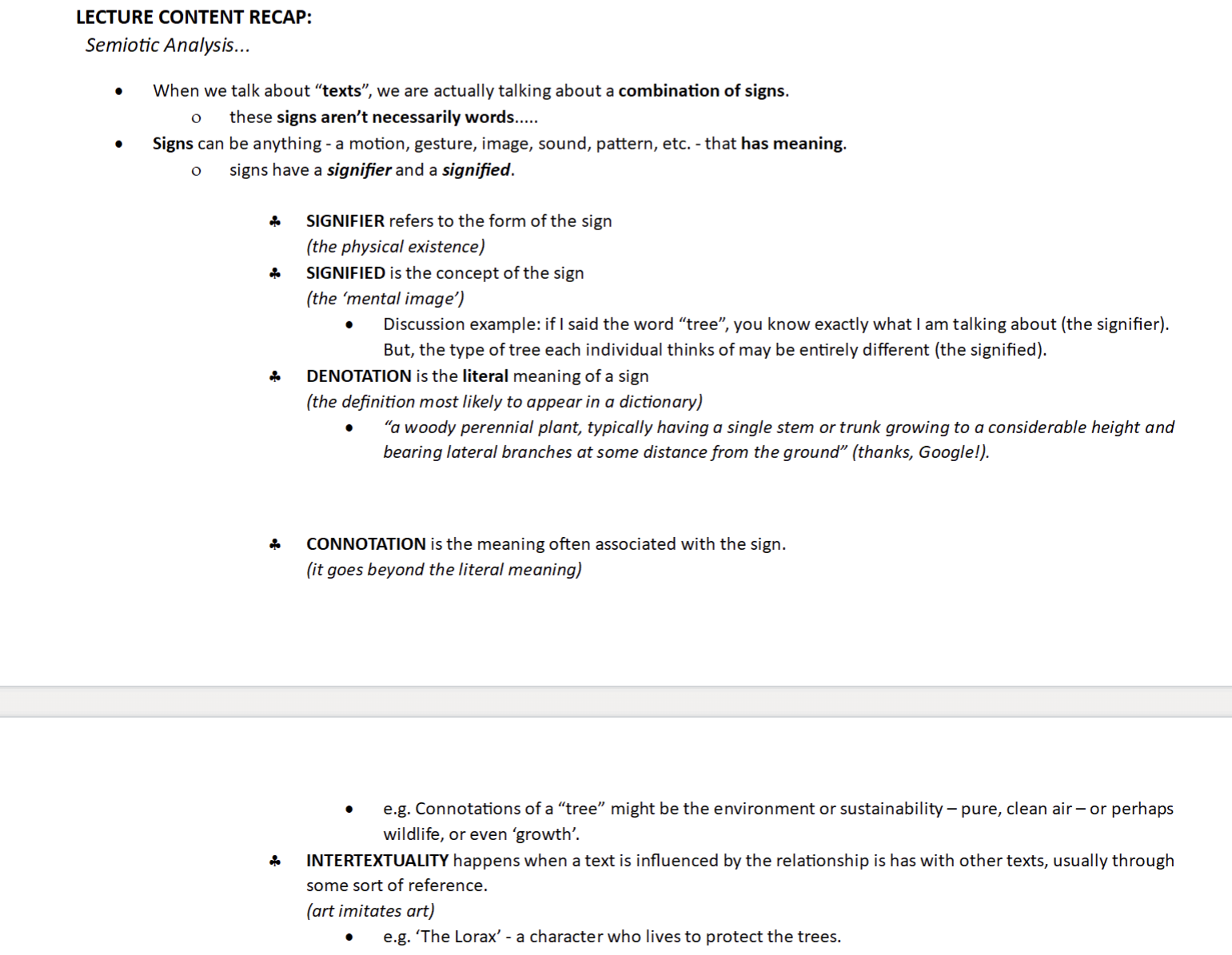
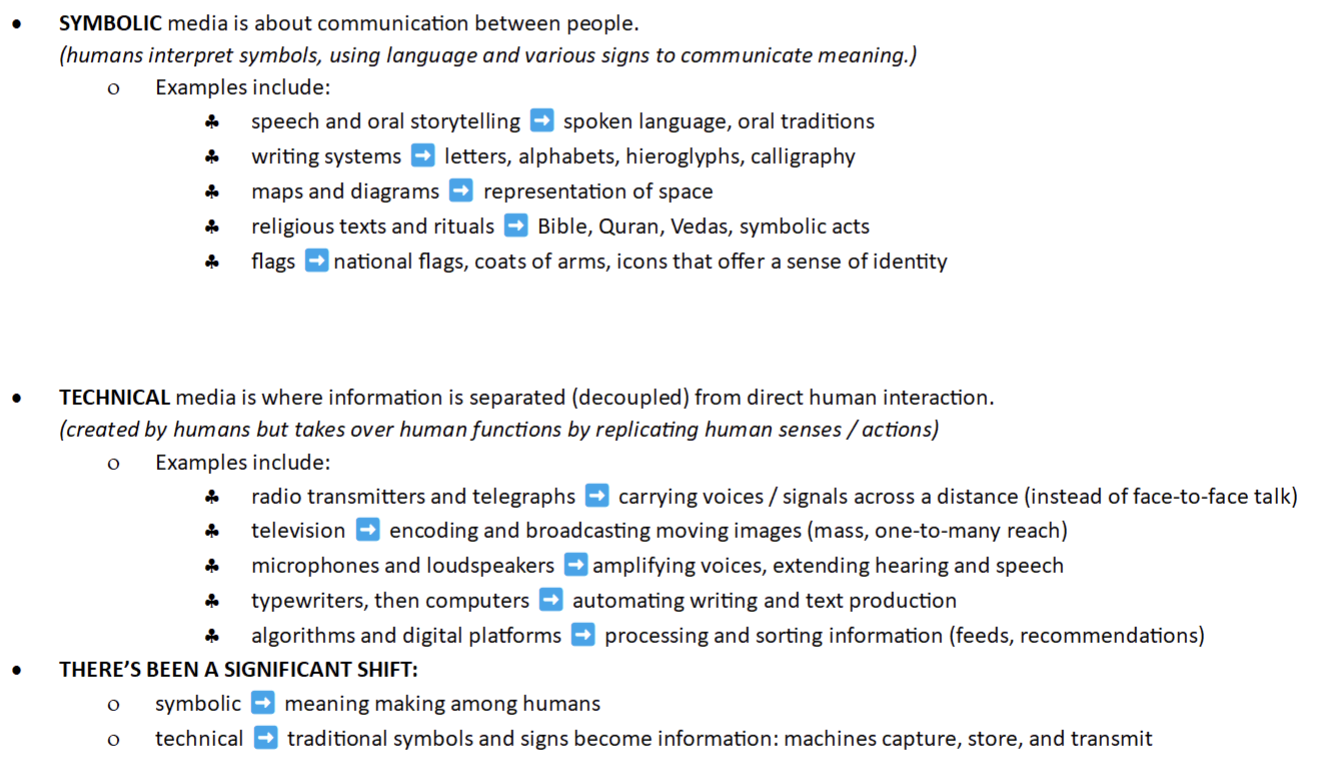
Encoding–Decoding: Stuart Hall

Hall’s background: Jamaican-born academic; part of the Birmingham School; focus on semiotics and how people interpret signs and symbols within shared cultural contexts.
Policing the Crisis: Hall analyzes how media representations of crime, policing, and social danger interact with public perceptions and legal outcomes.
Key claim: news is not a neutral mirror of events but the result of a social process of sorting/selecting events according to a socially constructed set of categories; media representations shape perceptions, attitudes, and policy responses (e.g., sentencing).
Power dynamics: media representations create a reciprocal relationship between consensual and coercive power; the public consents to certain norms while media and authorities foster coercive enforcement through representation.
Coercive vs consensual power:
Consensual power: participants in the system comply with norms and rules out of perceived legitimacy.
Coercive power: authorities enforce rules through force or threat; media representations contribute to perceptions that sustain coercive actions.
Encoding–decoding framework:
Producers encode meaning into media artifacts using their knowledge, relations of production, and technical infrastructure.
Receivers decode messages using their own knowledge, production practices, and technology; decoding is not a direct mirror of encoding.
The difference between encoding and decoding is shaped by context, culture, and material conditions.
Three decoding positions (as per Hall and the educational video):
Dominant (magic bullet) decoding: the audience accepts the intended meaning; the decoded meaning aligns with the producer’s message.
Negotiated decoding: the audience accepts some aspects of the intended meaning but reinterprets others; they adapt the message to their own context.
Oppositional decoding: the audience understands the intended message but rejects it, often due to different cultural or political frames.
Practical illustration (tutorial video by Nick Cara): a short explanation of encoding/decoding with a simple visual example of three decoding options.
Contemporary example: OpenAI’s ChatGPT and AI in education
OpenAI launched ChatGPT (2022); later released an economic blueprint for Australia (February); aims to influence education, healthcare, and public institutions to adopt AI technologies.
Encoding: OpenAI encodes a vision of AI as transformative and beneficial for education; the blueprint is a cultural product aimed at persuading policymakers and institutions.
Decoding: three potential responses deployed by institutions:
Dominant: embrace and evangelize AI (e.g., supportive university staff sharing positive views).
Oppositional: reject or constrain AI use (e.g., UQ historically banning AI tools in assessments).
Negotiated: adopt a controlled, governed approach that allows AI tools but with restrictions tailored to course objectives and ethics.
In late terms, UQ shifted from an oppositional stance to a negotiated stance, allowing responsible AI use with course-specific restrictions.
Relevance to the course: the encoding–decoding model helps analyze how media and cultural industries push certain tools and narratives, while receivers (students, universities) respond in varied ways depending on context and power relations.
Encoding–Decoding model (Hall): producers encode meanings via knowledge, production relations, and infrastructure; receivers decode meanings through their own knowledge, production, and infrastructure.
Dominant decoding: audience accepts intended meaning.
Negotiated decoding: audience accepts some aspects and negotiates others.
Oppositional decoding: audience rejects the intended meaning.
Concepts
1. Convergence Culture – Henry Jenkins
Media, content, people, and corporations converge across platforms.
Optimistic view: enables self-expression, exploration of interests, community-building, participatory culture.
Key term: transmedia storytelling (Marvel as an example).
Critical question: Does convergence democratize culture or consolidate corporate power?
2. Algorithmic Cultures – Ted Stryfus
Pessimistic counterpoint to Jenkins.
Algorithms appear to give choice but steer behavior toward commercial outcomes.
Links to Adorno & Horkheimer’s “culture industry” critique (illusion of choice).
Shows how power and profits concentrate via platform data practices.
3. Algorithmic Imaginaries – Taina Booher
How users imagine algorithms to work shapes their posting and consumption habits.
Not just “false beliefs” – imaginaries actively structure user behavior (e.g., trying to “game” TikTok).
Important for explaining why audiences self-moderate content or adopt strategies to go viral.
4. Spiral of Silence – Elisabeth Noelle-Neumann
People self-censor opinions perceived as unpopular.
Leads to underrepresentation of certain views and skewed perception of public opinion.
Mass media act as key reference points for the “climate of opinion.”
Fits especially well with online moderation, shadow banning, and self-policing behaviors.
5. Platforms as Techno-Cultural & Socio-Economic Constructs – José van Dijck
Platforms are not neutral; they have three techno-cultural and three socio-economic elements:
Technology (data, metadata, algorithms)
Users/usage
Content
Ownership
Governance
Business models
Encourages a six-element framework for analyzing any platform.
6. Gillespie’s Four Dimensions of Platforms
Computational: infrastructures supporting apps and services.
Architectural: built structures for activity (rules, affordances).
Figurative: bases for other actions/events.
Political: spaces of speech and power relations.
Good for examining platform power and “who benefits.”
7. Audience Labor (Work of Watching & Being Watched) – Nicholas Carra
Work of Watching: paying attention, performing semiotic analysis even when passive.
Work of Being Watched: producing user-generated content/data for free (surveillance capitalism).
Questions: What kind of work? For whom? Who benefits? Is it fair?
Connects to Facebook/Meta claims about data, ads, and “better service.”
8. Digital Panopticon (Carlson & Fraser)
Adaptation of Bentham’s panopticon: constant potential surveillance online.
Users behave as if always being watched (future employers, family, state).
Explains self-censorship and “joyful assertion” strategies in Indigenous social media.
9. Surveillance Capitalism – Shoshana Zuboff
“Human experience as free raw material” → behavioral data → prediction products.
Distinction between data used for service vs. behavioral surplus used for behavioral futures markets.
Shows how AI training and ad targeting monetize user activity.
10. Kittler’s Three Stages of Media (Symbolic, Technical, Digital)
Symbolic: embodied human communication (writing, rock art).
Technical: technologies that store/transmit media (telegraph, TV).
Digital: binary, interoperable, distributed networks.
Good for analyzing the infrastructure behind any media artifact.
11. Agenda-Setting (Lippmann, Cohen)
Media don’t tell you what to think but what to think about.
Shapes salience of issues rather than direct persuasion.
Works well with examining front-page placement, trending topics, or the stimulus’s highlighted features.1
1. Convergence Culture (Henry Jenkins)
One theory/concept from the course: Convergence Culture (Henry Jenkins)
Explain this theory/concept: Convergence culture describes how media, content, and audiences flow across multiple platforms, enabling participatory practices and remixing.
Why especially appropriate for analysing the stimulus: The stimulus can be seen as part of a larger ecosystem where meanings and audiences circulate between channels, communities, and corporate owners.
One question inspired by this theory/concept: How does this media artifact encourage audiences to carry its message across other platforms or remix it into new contexts?
2. Algorithmic Culture (Ted Stryfus)
One theory/concept from the course: Algorithmic Culture (Ted Stryfus)
Explain this theory/concept: Algorithmic culture highlights how platforms’ hidden rules guide what people see and do, creating an illusion of free choice while steering behaviour toward commercial outcomes.
Why especially appropriate for analysing the stimulus: Any stimulus circulating online is shaped by algorithmic curation that decides its visibility and reception.
One question inspired by this theory/concept: In what ways might algorithms decide who sees this message and how that shapes its impact?
3. Algorithmic Imaginaries (Taina Booher)
One theory/concept from the course: Algorithmic Imaginaries (Taina Booher)
Explain this theory/concept: Algorithmic imaginaries are the beliefs and assumptions users form about how algorithms work, which influence how they post, watch, and interpret content.
Why especially appropriate for analysing the stimulus: Audiences of this stimulus will act based on what they imagine about reach, virality, or moderation, not just on the content itself.
One question inspired by this theory/concept: How do users’ assumptions about platform algorithms affect how they share or respond to this artifact?
4. Spiral of Silence (Elisabeth Noelle-Neumann)
One theory/concept from the course: Spiral of Silence (Elisabeth Noelle-Neumann)
Explain this theory/concept: The spiral of silence theory says people self-censor opinions they perceive as unpopular, leading to skewed public discourse.
Why especially appropriate for analysing the stimulus: Any stimulus could shape which views feel “safe” to express and which become invisible.
One question inspired by this theory/concept: What opinions or identities might audiences suppress when engaging with this stimulus?
5. Platforms as Techno-Cultural & Socio-Economic Constructs (José van Dijck)
One theory/concept from the course: Platforms as Techno-Cultural & Socio-Economic Constructs (José van Dijck)
Explain this theory/concept: Van Dijck’s framework sees platforms as intertwined technical systems and business structures shaped by ownership, governance, and culture.
Why especially appropriate for analysing the stimulus: The stimulus exists within a platform whose design, rules, and business model influence its meaning and reach.
One question inspired by this theory/concept: How do the platform’s ownership, governance, or business model affect how this content is produced or received?
6. Gillespie’s Four Dimensions of Platforms
One theory/concept from the course: Gillespie’s Four Dimensions of Platforms
Explain this theory/concept: Platforms are simultaneously computational, architectural, figurative, and political spaces that enable and constrain speech.
Why especially appropriate for analysing the stimulus: Any online stimulus sits in a platform that structures who can speak, how, and with what power.
One question inspired by this theory/concept: How do this platform’s architecture and politics shape who benefits from the message?
7. Audience Labor – Work of Watching / Being Watched (Nicholas Carra)
One theory/concept from the course: Audience Labor (Nicholas Carra)
Explain this theory/concept: Audiences perform unpaid labor by paying attention (“watching”) and by producing data/content (“being watched”) that benefits media companies.
Why especially appropriate for analysing the stimulus: Any stimulus demands audience attention and generates data that can be monetized.
One question inspired by this theory/concept: What kinds of unpaid work do audiences do when they engage with this stimulus?
8. Digital Panopticon (Carlson & Fraser)
One theory/concept from the course: Digital Panopticon (Carlson & Fraser)
Explain this theory/concept: The digital panopticon describes how constant potential surveillance online causes users to regulate themselves as if always being watched.
Why especially appropriate for analysing the stimulus: Any stimulus on social media may be consumed under conditions of surveillance, shaping how people present themselves.
One question inspired by this theory/concept: How might the awareness of being watched change how people share or comment on this artifact?
9. Surveillance Capitalism (Shoshana Zuboff)
One theory/concept from the course: Surveillance Capitalism (Shoshana Zuboff)
Explain this theory/concept: Surveillance capitalism captures human experience as free raw material for behavioural data used to predict and influence future actions.
Why especially appropriate for analysing the stimulus: Any stimulus online can generate behavioural surplus data beyond what is needed for service delivery.
One question inspired by this theory/concept: How is data from interactions with this stimulus harvested and turned into prediction products?
10. Kittler’s Three Stages of Media (Symbolic, Technical, Digital)
One theory/concept from the course: Kittler’s Three Stages of Media
Explain this theory/concept: Kittler distinguishes symbolic (embodied), technical (mass-produced), and digital (binary, interoperable) media as historical stages shaping communication.
Why especially appropriate for analysing the stimulus: Any modern stimulus embodies digital principles—binary code, interoperability, and distributed networks—which affect how it is stored and shared.
One question inspired by this theory/concept: How does the digital infrastructure behind this artifact change its reach and meaning compared with earlier media forms?
11. Agenda-Setting (Lippmann, Cohen)
One theory/concept from the course: Agenda-Setting (Lippmann, Cohen)
Explain this theory/concept: Agenda-setting theory states media don’t tell people what to think but what to think about by making some topics salient over others.
Why especially appropriate for analysing the stimulus: Any stimulus can function to prioritise certain issues or products in public attention.
One question inspired by this theory/concept: What topics or values does this stimulus push to the top of the audience’s agenda?
Section 1: Lasswell’s Model of Communication
Q1.1 Who
IKEA (the company/brand) as the sender of the message.
Q1.2 What
Promoting its “IKEA kitchen matchmaker” quiz – an interactive tool to help customers design or choose a kitchen.
Q1.3 In which channel
The official IKEA website (ikea.com) – specifically the home page banner.
Q1.3.1 How does the use of this channel in particular support the message and its intended effect(s)?
Using the website allows IKEA to directly target active shoppers online, integrate the quiz seamlessly with its product catalogue, and drive immediate participation or purchases without requiring users to leave the site.
Q1.4 To whom
Potential IKEA customers – especially household decision-makers planning a kitchen upgrade or renovation.
Q1.4.1 How do you know this?
The webpage prominently features “Take the quiz!” and “Go shopping” buttons, indicating it targets people actively looking for kitchen solutions or shopping for furniture online.
Q1.5 What effect (intended)
Encourage visitors to engage with the quiz and move from browsing to planning and purchasing IKEA kitchen products.
Section 2: Semiotics
Q2.1 Identify one sign in the stimulus.
The bright yellow “Go shopping” panel.
Q2.1.1 Denotative meaning
A clickable section inviting the user to start shopping on IKEA’s online store.
Q2.1.2 Two connotative meanings
Yellow connotes warmth, optimism, and the IKEA brand colour – evoking positive feelings about shopping.
The large bold text with an arrow connotes urgency/action – suggesting an easy, seamless path to purchase.
Q2.2 Identify two signs in the stimulus that work together to create meaning.
The heart icons floating above people at the kitchen table.
The text “The IKEA kitchen matchmaker.”
Q2.2.1 How these signs work together to create meaning (one sentence):
The hearts plus the “matchmaker” wording frame the kitchen quiz as a personalised, even romantic “match-making” experience that helps customers find their “perfect” kitchen.
Section 3: Encoding/Decoding
Q3.1 Dominant reading (aligned action/behaviour):
A viewer clicks “Take the quiz,” completes it, and starts planning an IKEA kitchen exactly as intended by the campaign.
Q3.2 Negotiated reading (mixed action/behaviour):
A viewer likes the quiz idea but only browses for inspiration, then buys kitchen products elsewhere or later.
Q3.3 Oppositional reading (resistant action/behaviour):
A viewer rejects the quiz as manipulative marketing and leaves the site without engaging or shopping.
Section 4: Critical Theory Application
Q4.1 One theory/concept from the course (not Lasswell, semiotics, or Hall):
The Culture Industry (Adorno & Horkheimer).
Q4.1.1 Explain this theory/concept (1–2 sentences):
The “culture industry” refers to the mass production of cultural goods that standardise taste and behaviour, framing consumers as passive audiences whose desires are shaped by corporate interests.
Q4.1.2 Why especially appropriate for analysing the stimulus (1–2 sentences):
IKEA’s quiz and bright visuals commodify the kitchen-planning process, transforming a personal home decision into a standardised, branded experience that channels consumers toward buying IKEA products.
Q4.1.3 One question inspired by this theory/concept:
How does IKEA’s “kitchen matchmaker” turn an individual’s style preferences into a predictable, mass-marketed kitchen solution that benefits the company?
Section 1: Lasswell’s Model of Communication
Formula: Who says what in which channel to whom with what effect.
COMU1120 Exam Questions 2025 - …
Q1.1 Who: Identify the sender (brand, company, individual, group). Look at logos, speaker, or producer of the content.
Q1.2 What: Summarise the main message (e.g., “buy this product,” “support this cause,” “take this action”).
Q1.3 In which channel: State the medium (poster, TV ad, Instagram post, website, radio, etc.).
Q1.3.1 How the channel supports the message: Explain why this medium is effective (visual imagery for posters, interactive features for websites, broad reach for TV, personalization for social media).
Q1.4 To whom: Identify the target audience (demographics, lifestyle, needs). Look for cues (language, style, imagery).
Q1.4.1 How do you know this: Point to evidence (colours, age of people shown, references, tone, or call-to-action).
Q1.5 What effect: State the intended effect (buy, donate, change attitude, sign up, feel fear, feel hope, etc.).
Section 2: Semiotics
Semiotics = study of signs. Sign = Signifier (the form) + Signified (the meaning).
Introduction to Today
Q2.1 One sign: Pick a clear element (logo, slogan, colour, object, gesture).
Q2.1.1 Denotative meaning: Literal meaning (what it is physically: “a red heart icon” = a heart shape).
Q2.1.2 Connotative meanings: Implied or cultural meanings (heart = love, warmth, relationships). Give two.
Q2.2 Two signs working together: Choose two connected elements (e.g., heart + “matchmaker” text; or smiling child + bright colours).
Q2.2.1 Explain how they work together: In one sentence, show how they reinforce the message (e.g., together they suggest love, positivity, or community).
Section 3: Encoding/Decoding (Stuart Hall)
Introduction to Today
Dominant reading: Audience accepts the intended message fully and acts accordingly (e.g., buys the product, signs up, shares the campaign).
Negotiated reading: Audience partly accepts the message but adapts it with their own context (e.g., likes the ad but only browses, doesn’t buy).
Oppositional reading: Audience rejects or resists the message (e.g., thinks the ad is manipulative and ignores it).
Tip: Always phrase as a potential action or behaviour someone could do.
Section 4: Critical Theory Application
COMU1120 Exam Questions 2025 - …
This is where you pick one concept from the course (not Lasswell, semiotics, or Hall). Apply it generically.
Q4.1 One theory/concept from the course: Choose from Jenkins (Convergence), Stryfus (Algorithmic Culture), Booher (Algorithmic Imaginaries), Spiral of Silence, van Dijck (Platforms), Gillespie (Four Dimensions), Audience Labor, Digital Panopticon, Zuboff (Surveillance Capitalism), Kittler (Three Media Stages), or Agenda-Setting.
Q4.1.1 Explain: Give a clear 1–2 sentence definition.
Q4.1.2 Why appropriate for stimulus: Link how the theory helps reveal hidden meanings, power dynamics, or audience behaviour in the stimulus.
Q4.1.3 One question inspired by theory: Pose a critical question (e.g., “How does this ad commodify participation?” “How do algorithms decide who sees this?” “What voices are silenced by this campaign?”).
